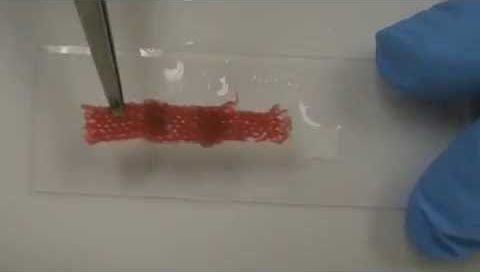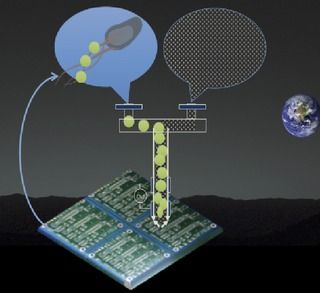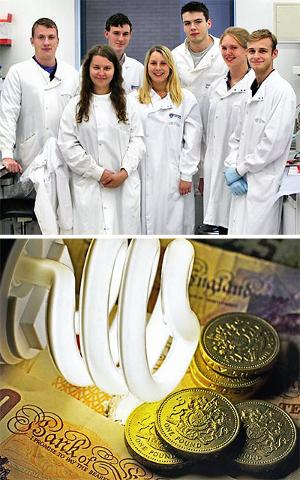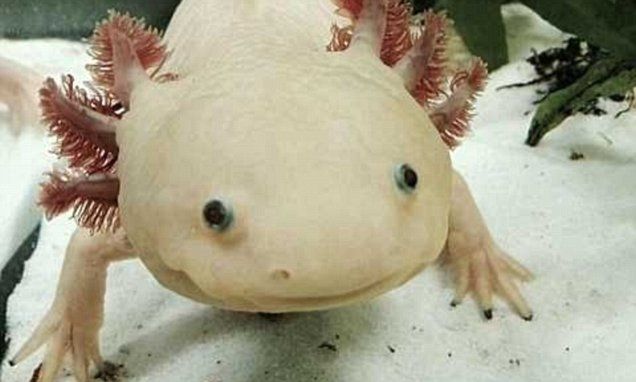Archive for the ‘biological’ category: Page 204
Aug 22, 2016
Identifying the Microbial Culprits Initiating Oceanic Nitrogen Loss
Posted by Karen Hurst in categories: bioengineering, biological
Oxygen minimum zones (OMZs) extend over about 8 percent of the oceanic surface area, but account for up to 50 percent of the total loss of bioavailable nitrogen and thus play an important role in regulating the ocean’s productivity by substantially impacting the nitrogen cycle. By sequencing single cells and metagenomes from OMZs, researchers identified bacteria of the SAR11 clade as being abundant in these areas, although no previously known anaerobic metabolism had been described for this group. Detailed sequence analysis of SAR11 single cells, followed by functional characterization experiments, revealed the presence of functional nitrate reductase pathways as a key adaptation to oxygen-poor, or anoxic, environments. These results link SAR11, the world’s most abundant organismal group, to oceanic nitrogen loss.
The Impact
Microbes play key roles in maintaining the planet’s biogeochemical cycles, and while the role of SAR11 bacteria in the marine carbon cycle has been well documented, its important role in regulating nitrogen bioavailability was hitherto unknown. In partnering with a national user facility, scientists had access to state-of-the-art single-cell sorting and synthetic biology capabilities at the DOE JGI, enabling them to identify and functionally characterize the role of SAR11 in oxygen minimum zones in the ocean.
Continue reading “Identifying the Microbial Culprits Initiating Oceanic Nitrogen Loss” »
Aug 22, 2016
Changing the Nature of Nature
Posted by Bruno Henrique de Souza in categories: bioengineering, biological, genetics

Alterar a natureza da natureza.
Inovadores estão trabalhando em direção a um mundo no qual a matéria viva é totalmente programável por meio da biologia sintética onde as pessoas já não são apenas consumidores de tecnologia, mas os cidadãos de um mundo tecnológico.
Aug 18, 2016
Here’s 10 Theories That Will Make You Lose Your Mind
Posted by Karen Hurst in category: biological
I consider myself a collector of sorts. I collect strange, bizarre notions and theories that warp traditional narratives about reality and existence. The following is a presentation of 10 of my favorite mind-blowing theories. There is compelling evidence for each, but you certainly don’t – and, for the sake of your sanity, probably shouldn’t – need to take them as gospel.
1. The Singularity: We will transcend biology and live as posthuman Gods.
Aug 14, 2016
IBM’s New Artificial Neurons a Big Step Toward Powerful Brain-Like Computers
Posted by Andreas Matt in categories: biological, computing
Thanks to a sleek new computer chip developed by IBM, we are one step closer to making computers work like the brain.
The neuromorphic chip is made from a phase-change material commonly found in rewritable optical discs (confused? more on this later). Because of this secret sauce, the chip’s components behave strikingly similar to biological neurons: they can scale down to nanometer size and perform complicated computations rapidly with little energy.
Aug 13, 2016
UK scientists create biological lightbulbs
Posted by Karen Hurst in categories: bioengineering, biological, genetics
They discovered genetically engineered bacteria’s response to shocks.
Genetically engineered E coli bacteria responds to electric shocks by producing a fluorescent protein that can be used as a light source. A team of undergraduate scientists at Newcastle University have created a lightbulb made up of living matter.
Like any other electric bulb, the living light glows to illuminate a room, but is made by replacing some of the traditional electric components in a lightbulb circuit with biological parts.
Continue reading “UK scientists create biological lightbulbs” »
Aug 13, 2016
Self-healing textiles not only repair themselves, but can neutralize chemicals
Posted by Klaus Baldauf in categories: biological, materials

UNIVERSITY PARK, Pa. — Someday, chemically protective suits made of fabric coated in self-healing, thin films may prevent farmers from exposure to organophosphate pesticides, soldiers from chemical or biological attacks in the field and factory workers from accidental releases of toxic materials, according to a team of researchers.
“Fashion designers use natural fibers made of proteins like wool or silk that are expensive and they are not self-healing,” said Melik C. Demire l, professor of engineering science and mechanics. “We were looking for a way to make fabrics self-healing using conventional textiles. So we came up with this coating technology.”
Continue reading “Self-healing textiles not only repair themselves, but can neutralize chemicals” »
Aug 11, 2016
The laws of nature make life on other planets inevitable — according to this groundbreaking theory
Posted by Shailesh Prasad in categories: alien life, biological, chemistry, physics
According to theoretical physicist and super-genius Stephen Hawking, “The human race is just a chemical scum on a moderate-sized planet orbiting round a very average star in the outer suburb of one among a hundred billion galaxies.” Indeed, to most modern scientists we are nothing more than an entirely random ‘happy accident’ that likely would not occur if we were to rewind the tape of the universe and play it again. But what if that is completely wrong? What if life is not simply a statistical anomaly, but instead an inevitable consequence of the laws of physics and chemistry?
A new theory of the origin of life, based firmly on well-defined physics principles, provides hefty support for the notion that biological life is a “cosmic imperative”. In other words, organic life had to eventually emerge. If such a theory were true, it would mean that it is very likely that life is widespread throughout the universe.
Aug 11, 2016
Scientists have found a set of genetic switches needed to regrow limbs
Posted by Carse Peel in categories: biological, genetics
Could humans regrow limbs? Genetic switches for regenerating tissue are traced back 420 million years…
But ultimately the researchers hope to see if the mechanism could be exploited to allow humans to regenerate limbs themselves, although they warn it could be several decades before that is possible.
Dr Yin said: ‘It depends on the pace of discovery, which is heavily dependent on funding.’
Continue reading “Scientists have found a set of genetic switches needed to regrow limbs” »
Aug 4, 2016
New way to model molecules
Posted by Karen Hurst in categories: biological, chemistry, computing, encryption, quantum physics, robotics/AI, solar power, sustainability
Magine a future in which hyper-efficient solar panels provide renewable sources of energy, improved water filters quickly remove toxins from drinking water, and the air is scrubbed clean of pollution and greenhouse gases. That could become a reality with the right molecules and materials.
Scientists from Harvard and Google have taken a major step toward making the search for those molecules easier, demonstrating for the first time that a quantum computer could be used to model the electron interactions in a complex molecule. The work is described in a new paper published in the journal Physical Review X by Professor Alán Aspuru-Guzik from the Department of Chemistry and Chemical Biology and several co-authors.
“There are a number of applications that a quantum computer would be useful for: cryptography, machine learning, and certain number-theory problems,” Aspuru-Guzik said. “But one that has always been mentioned, even from the first conceptions of a quantum computer, was to use it to simulate matter. In this case, we use it to simulate chemistry.”
















